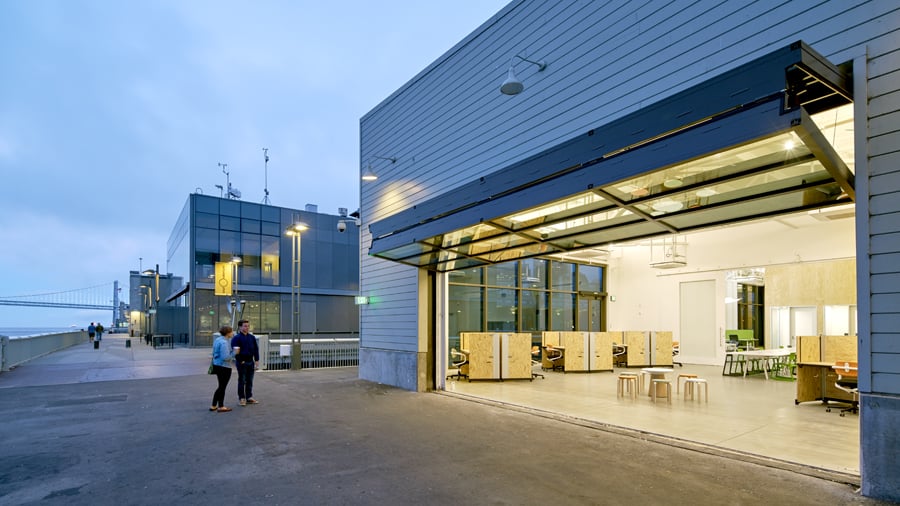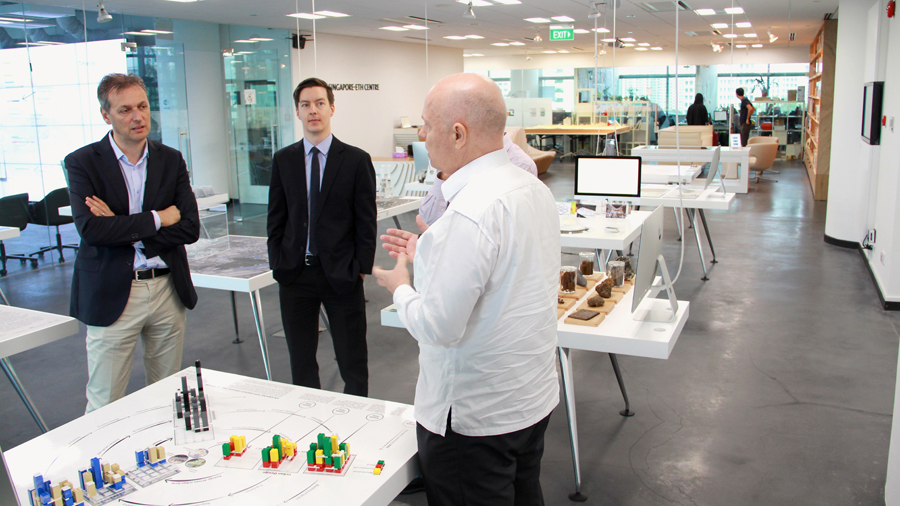
June 8, 2017
Vitra’s Raphael Gielgen Predicts Our Workplace Future
In conversation with our editors, Raphael Gielgen, head of research and trend scouting at Vitra, discusses how identity and technology will shape the offices of tomorrow.
Metropolis: How do you set priorities for your research?
Raphael Gielgen: I visit a lot of corporations, universities, designers, and architects who are challenging the status quo for themselves. I want to understand if the patterns I find in my research are similar to how they think.
The next priority is to view the world from the customer’s perspective. For this, I make learning journeys. When I travel, I take customers with me so that they get the same experience I get, and try to understand from them, what are their takeaways from what they have seen?
The last level of my work is to ask the community. In April, we finished a project with Jovoto, a crowdstorming company based in Berlin and New York, addressing two issues with the community: “What are your wishes for the future of work?” and “If you get the opportunity to live one week in the world of 2025, come back and tell us what you have seen.”
Our efforts are not science-based. I’m not a scientist; I’m not like a university researcher. It’s much more about looking around, understanding, combining things, finding patterns, and making new combinations.
M: Can you talk about some of the trends that you’re seeing? I heard one of them was about the focus on the individual. Can you tell us what that means?
RG: The older generation, like mine—I was born in 1969—was born into a community. I grew up in a small town, and that’s where I worked on my personality. In the past few years, people have been born and have grown up as individuals, and they are looking for their communities. If you look at coworking spaces or if you look at how people organize freelance groups, they’re looking for community.
If you work in a hierarchical organization, there’s no space for you as an individual and there’s no community. If you’re in an agile organization, there is much more space for you. Moreover, you have the possibility to choose the tools with which you do your work—like design thinking or whatever else—things that you want to do by yourself, which are not established practices in the company.
M: How is this manifested in new workplaces?
RG: The first shift is in personal space. When the people are allowed to take over their own workspace—in that they don’t have to clean it out, make it look corporate—you find pictures, sketches, small things, flowers, families, whatever. The smallest space for identity is the personal workspace. I believe there’s a lot of space for improvement at companies in providing personal work areas.
Another thing we found in our crowdstorm with Jovoto was that people think in terms of two kinds of spaces—one is the virtual space and the other is analog. Around 60 percent of the descriptions we got in our responses were ideas related to a virtual world. Only 40 percent were things in the real world.
We are living in a transitional time. It’s a generational question. In our Jovoto crowdstorm, there were a lot of ideas driven by artificial intelligence technologies that give you advice or direction, monitor your productivity, recommend what to do and what not to do. If you grew up with a Fitbit, Alexa, or Google Home, it’s normal for you to think of an artificial buddy or an artificial coworker. For me it isn’t normal. I’m 47, and I have never had an artificial buddy who gave me advice.
I believe the strongest challenges are related to labor and policy. It’s really critical to figure out how we can work with personal data, because it’s just a question of time. People will have the best IT infrastructure at home, with smart devices; they will get their augmented glasses or virtual reality headsets. The next step will be that they will want to have these kinds of tools in the workspace.

M: At Vitra, your furniture system Hack was inspired by Silicon Valley culture. Why do you continue to see Silicon Valley as a model?
RG: The first reason is the volume of key technologies that exist there in one area. You can go from door to door and meet people working on these technologies. There’s no other area in the world, except maybe Israel or Singapore, that you could get this experience. For us, it’s really important to understand what the influence of these technologies—augmented or virtual reality, internet of things, artificial intelligence—is in terms of future customer stories, and to find out what are the digital layers that will be combined with the analog world of Vitra. The second reason is the proliferation of companies that are growing exponentially. For a European it is really hard to understand how one could operate a company that grows 15 to 40 percent every year.
M: We see critical thinking and creativity becoming more important for offices in five years than they are now. How do you envision a space that fosters and allows for critical thinking and creativity?
RG: We should disconnect people from their laptops, from Excel, and from PowerPoint. Provide a space that is the opposite of the workspace they sit in most of the time. Also, give them the freedom to create the spaces around them as they want; let them make their own setup. Think about the garagelike collaboration spaces that are coming into offices—those are a prototype of these new types of work areas.
The other part is to provide data on demand. For critical thinking, it is necessary to get all the information you need for a decision immediately, although maybe not on one screen. Look at Oblong Industries, created by the guy who designed for the movie Minority Report. You have a space with this technology where you can provide several kinds of data and where everybody can contribute from their iPad or using a special tool.
Maybe a screen is not enough, a desktop is not enough, ordinary paper is not enough, to interact with your colleagues and to solve a challenge. We need to think in terms of these bigger surfaces and spaces we can work on.
Recent Viewpoints
Viewpoints
Finding Beauty in Climate Futures













